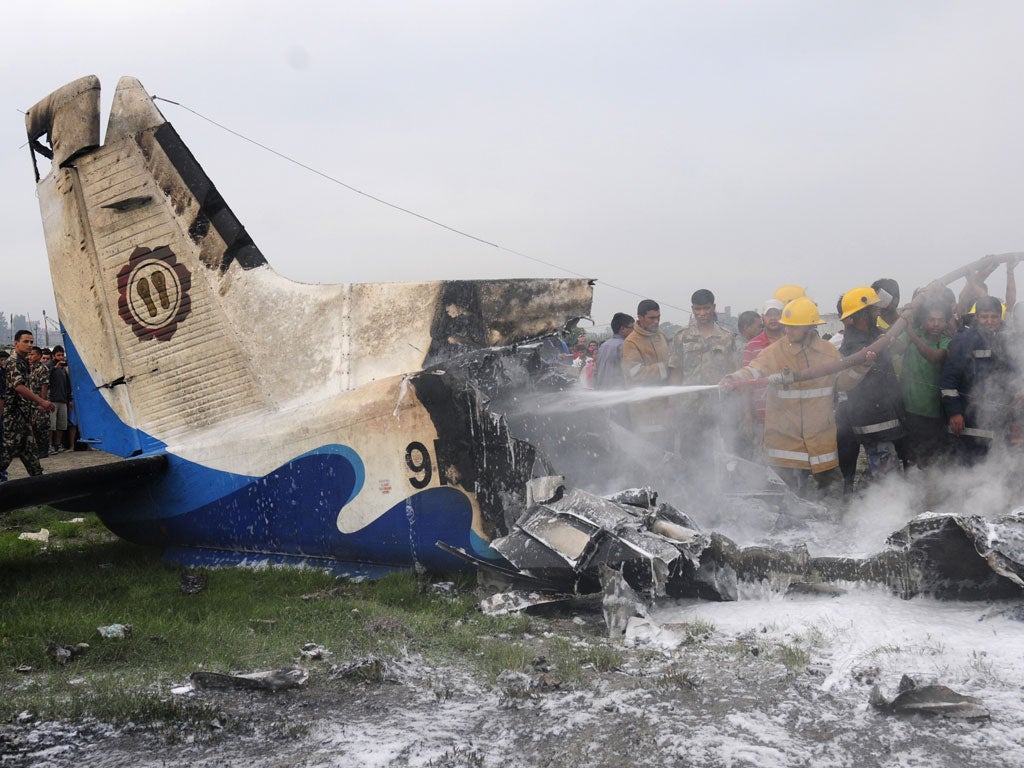Nepal Plane Crash: Is it safe to fly internally?
Britain's formidable aviation record is the envy of the world, but not all holiday destinations have the same safety standards.


Today, around a quarter of a million people will step aboard a British passenger jet. Like the three billion people who have flown on UK airlines in the 23 years since the Kegworth disaster that claimed the lives of 47 passengers, they will safely reach their destination. Britain's formidable aviation record is the envy of the world.
Those words will prove no comfort to the families and friends of the seven British travellers who died in Nepal on the eve of a great adventure. Their devastating loss follows five previous plane crashes in the past two years in the Himalayan kingdom, most involving foreign tourists.
This latest tragedy highlights the way that risks multiply once you leave these benign shores. Nepal - like Cuba, Peru and many other alluring destinations in the developing world – does not have the healthy obsession with safety that pervades British aviation.
Domestic airlines in such countries tend to use old, ill-maintained aircraft. They are often less tightly regulated in terms of maintenance and pilot training than international carriers, which have to comply with the standards of the countries to which they fly.
Add in challenging terrain and unpredictable weather in a high-altitude location such as Kathmandu, and the traveller’s odds worsen dramatically.
Explore, the tour operator that organised the trip, is highly regarded and well-run. Its staff will have done all they could to minimise the risks. I would readily book with the firm to the same part of the world. And, given the daily carnage on the roads of Nepal, I would always choose to fly rather than travel overland.
But the brutal truth is: the greater the traveller’s appetite for adventure, the higher the risk they must accept.
Most of us are fortunate to have nothing but rewarding experiences in far-flung locations, but luck will tragically run out for some.
Join our commenting forum
Join thought-provoking conversations, follow other Independent readers and see their replies
Comments
Bookmark popover
Removed from bookmarks